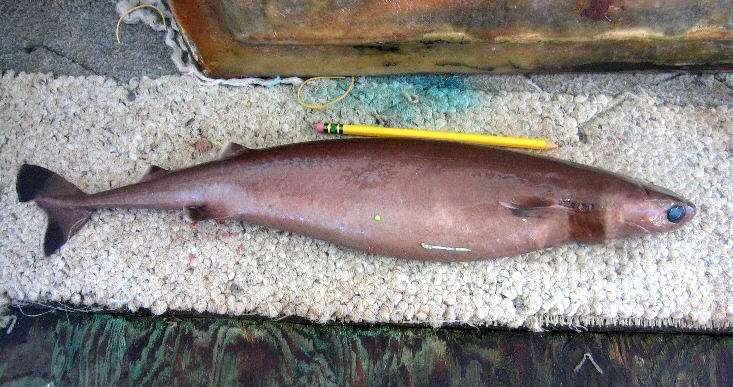Difference between revisions of "AY Honors/Species Account/Isistius brasiliensis"
m (+ translate tags) |
(Marked this version for translation) |
||
| Line 1: | Line 1: | ||
| − | <noinclude><translate></noinclude> | + | <noinclude><translate><!--T:1--> |
| + | </noinclude> | ||
{{Species_id | {{Species_id | ||
| latin_name = Isistius brasiliensis | | latin_name = Isistius brasiliensis | ||
| Line 7: | Line 8: | ||
| description = Reaching only 42–56 cm (17–22 in) in length, the cookiecutter shark has a long, cylindrical body with a short, blunt snout, large eyes, two tiny spineless dorsal fins, and a large caudal fin. It is dark brown in color, with light-emitting photophores covering its underside except for a dark "collar" around its throat and gill slits. | | description = Reaching only 42–56 cm (17–22 in) in length, the cookiecutter shark has a long, cylindrical body with a short, blunt snout, large eyes, two tiny spineless dorsal fins, and a large caudal fin. It is dark brown in color, with light-emitting photophores covering its underside except for a dark "collar" around its throat and gill slits. | ||
| + | <!--T:2--> | ||
These little sharks (compare to pencil in photo) like to take bites out of anything and everything. The swim in schools and use their sharp teeth to bite whales, seals, The bites are like round plugs, as if cut out with a cookie cutter. Marks made by cookiecutter sharks have been found on a wide variety of marine mammals and fishes, as well as on submarines, undersea cables, and even human bodies. It also consumes whole smaller prey such as squid. | These little sharks (compare to pencil in photo) like to take bites out of anything and everything. The swim in schools and use their sharp teeth to bite whales, seals, The bites are like round plugs, as if cut out with a cookie cutter. Marks made by cookiecutter sharks have been found on a wide variety of marine mammals and fishes, as well as on submarines, undersea cables, and even human bodies. It also consumes whole smaller prey such as squid. | ||
| + | <!--T:3--> | ||
Unusually they replace their teeth in entire sets, swallowing and recycling the old teeth! [https://www.youtube.com/watch?v=syISlRJTaw4 The perfect shark BBC] | Unusually they replace their teeth in entire sets, swallowing and recycling the old teeth! [https://www.youtube.com/watch?v=syISlRJTaw4 The perfect shark BBC] | ||
}} | }} | ||
<noinclude></translate></noinclude> | <noinclude></translate></noinclude> | ||
Revision as of 18:52, 28 November 2015
Cookiecutter Shark (Isistius brasiliensis)
Where found: Warm, oceanic waters worldwide, particularly near islands, and has been recorded from as deep as 3.7 km (2.3 mi).
Description: Reaching only 42–56 cm (17–22 in) in length, the cookiecutter shark has a long, cylindrical body with a short, blunt snout, large eyes, two tiny spineless dorsal fins, and a large caudal fin. It is dark brown in color, with light-emitting photophores covering its underside except for a dark "collar" around its throat and gill slits. These little sharks (compare to pencil in photo) like to take bites out of anything and everything. The swim in schools and use their sharp teeth to bite whales, seals, The bites are like round plugs, as if cut out with a cookie cutter. Marks made by cookiecutter sharks have been found on a wide variety of marine mammals and fishes, as well as on submarines, undersea cables, and even human bodies. It also consumes whole smaller prey such as squid. Unusually they replace their teeth in entire sets, swallowing and recycling the old teeth! The perfect shark BBC

